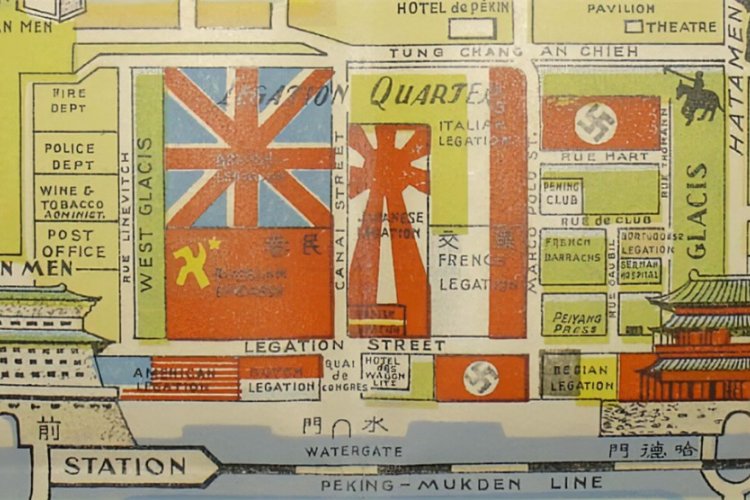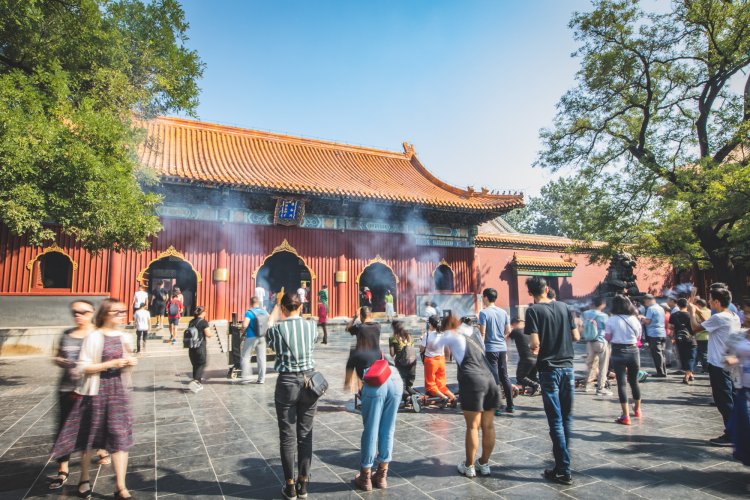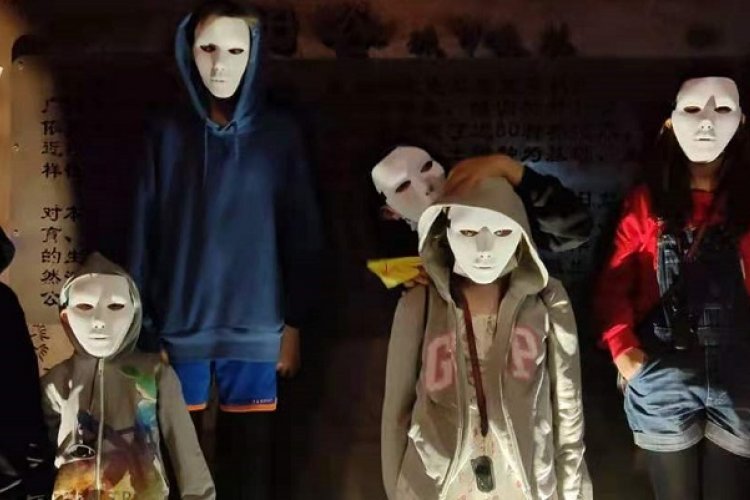Weekend Walk: Holy Peking! Or, Walking Where Foreign and Chinese Once Collided
Weekend Walk is your guide to getting away in the city using nothing but your own two feet.
Beijing, or Peking, as it was once romanticized, used to be a city of churches of all shapes and sizes, as well as a missionary presence to go along with them that also had a medical bent. Some of these churches and institutes of medicine still stand today, and they'll be the focus of our walk.
We begin at Dengshikou subway station. The name "Dengshikou" stems from the legacy of a seasonal lantern market held in the area towards the end of Chinese New Year each year, from the late Ming to early Qing dynasties.
The Dengshikou Congregational Church was once located a short distance north of the subway station, at 15 Dengshikou Beixiang. Originally built in 1864, the church was destroyed in 1900 during the Boxer Rebellion. Rebuilt in 1904, it was eventually demolished again, but was rebuilt once more and remains standing today. There’s not much left to see, so we’ll head south instead.

Walk south from Dengshikou (if you’re at Exit A of Dengshikou subway station turn right) and cross over Jinyu Hutong. “Goldfish Lane” is a quaint moniker for a street that has been developed since the 1990s. The Peninsula and Waldorf Hotels stand today where purveyors of colorful piscine pets long ago made their trade.
Continue south along Dongdan Beidajie and you will see a building with a Chinese-style roof looking a bit out of place among the shopping centers and hotels. This is the former branch of the China Bible Society, built in 1928.
The Bible Society believed in “supply side” conversions: If we print enough bibles, somebody will read them. The building later housed the Beijing office of the Three-Self Patriotic Movement Committee and Beijing Christian Council. The original Republican-era headquarters of the YMCA, which once occupied the area just north of the China Bible Society building, was demolished in 1988.

Just south of the China Bible Society stands Peking Union Medical College Hospital, a modern hospital built on the grounds of the former Peking Union Medical College.
First founded in 1906, the college received a major contribution from the Rockefeller Foundation in 1915. Peking Union Medical College became one of the leading hospitals and medical schools in China, and a center of research in the field of epidemiology.

Across the street from the north side of the hospital is the western entrance to Dongtangzi Hutong. This hutong runs between Dongdan Beidajie and Chaoyangmen Nanxiaojie, and is worth a short detour.
Just past the intersection with Dongdan Beidajie on the north side of the lane is the former home of Cai Yuanpei (1868-1940), chancellor of Peking University during the heady days of the New Culture Era, and one of the most important and influential educators in modern Chinese history. The home is sometimes open to the public, depending on the staff’s mood.

A little further down, also on the north side of the hutong, is the former gate of the Zongli Yamen. This office was established in 1861 as a place for the recently installed representatives in the Legation Quarter to go whenever some foreign diplomat got in a huff with one of their Qing imperial counterparts and demanded to "see a manager.”
Sadly, all that's currently visible is the old gate hidden by a modern high wall.

Finally, at the very end of Dongtangzi Hutong, just before the intersection with Chaoyangmen Nanxiaojie, is the former home of Dr. Wu Lien-teh (1879-1960). Born in Penang, Dr. Wu graduated from Cambridge Medical School and was hired by the Qing government to assist the army with medical research.
In the winter of 1909-1910, Dr. Wu was instrumental in preventing an outbreak of the Pneumonic Plague in Harbin from spreading throughout China. His home has recently received a significant face-lift but is not open to the public.

A memorial arch once spanned Dongdan Beidajie near the western entrance of Dongtangzi Hutong. The arch marked the spot where Baron Clemens von Ketteler (1853-1900) was killed in June 1900 during the Boxer Rebellion.
This morbid memorial of sorts stood from 1901 to 1918, when the people of Beijing dismantled the structure to “celebrate the victory over Germany in the Great War” (Read: as good an excuse as any to take the damn thing apart). The arch was later reassembled and re-branded, and can now be seen just inside the entrance of Zhongshan Park to the west of Tian'anmen.

Just past the Peking Union Medical College Hospital, on the west side of the street, is the entrance to Dongdan Santiao. Take a short walk down this street, and on the north side you will find a gate and some of the original buildings of Peking Union Medical College. (Fun fact: The Rockefellers purchased the land for their expansion for USD 200,000 from the descendants of Dodo, Prince Yu (1614-1649), who was one of the sons of Nurhaci, who led the Manchu conquest of China back in 1644.)
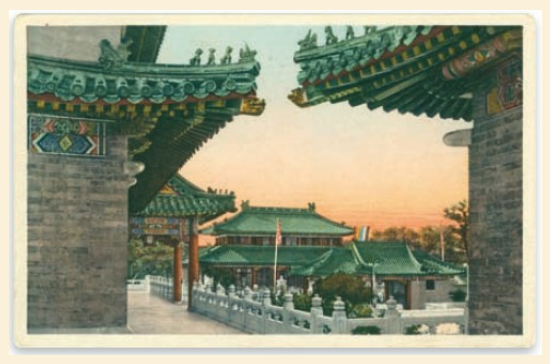
Head back to Dongdan Beidajie and walk south about one kilometer, crossing over Chang’an Avenue and heading past the Dongdan sports complex and the entrance to Dongdan Park. Just past the entrance to Dongdan Park, on the opposite (east) side of Chongwenmennei Dajie, is Chuan’ban Hutong.
Today, it’s a rather conventional residential street, but in the 1920s and 1930s, this was part of the “Badlands,” described in Paul French’s book Midnight in Peking. This was where the good (and not-so-good) folks from the nearby foreign legations went to get their freak on.
The “Badlands” was once a neighborhood of brothels, bars, drug dens, flophouses, and home of all sorts of sordid and sundry vices, which is why, if you walk a little further and turn south on to Houguo Hutong, it might seem a bit odd to come across one of the city’s oldest Protestant churches in this area.
The former Asbury Methodist Church was first established in the 1870s, but was destroyed in the Boxer Rebellion. The current compound was completed in 1904. While the church is behind a wall, sometimes a polite wave will grant you access to the courtyard and a view of the main building.
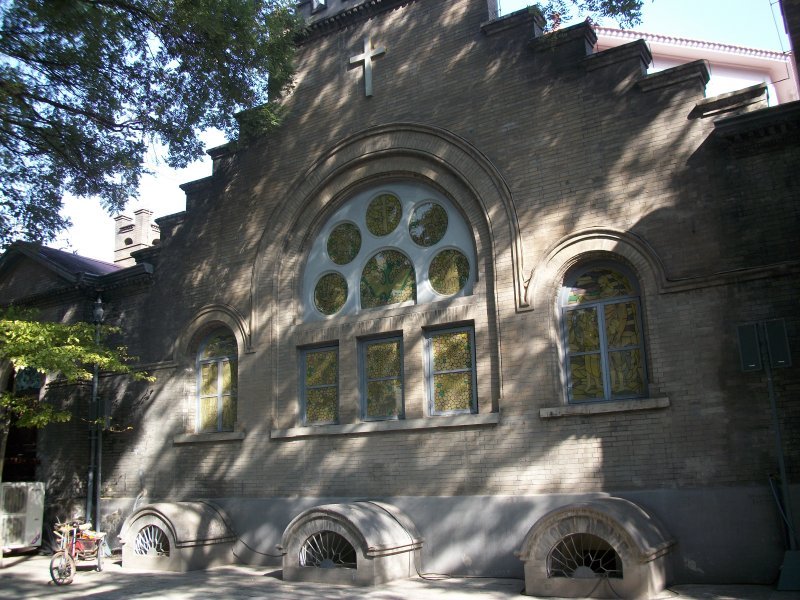
Continue south along Houguo Hutong until you reach the main road, Beijingzhan Xijie, and turn right. You will see the Chongwenmen station subway stop, and just a little ways north of the station, the large Beijing Tongren Hospital. Directly in front of the hospital is the eastern end of Dongjiaominxiang, the thoroughfare formerly known as Legation Street.
Walking west along Legation Street takes you into the old diplomatic quarter. Walk 450 meters, and you will see the Gothic spires of St. Michael’s Church, built in 1904 by members of the French Lazarist community in Beijing. Across from the gates of the church is the former Belgian Legation.
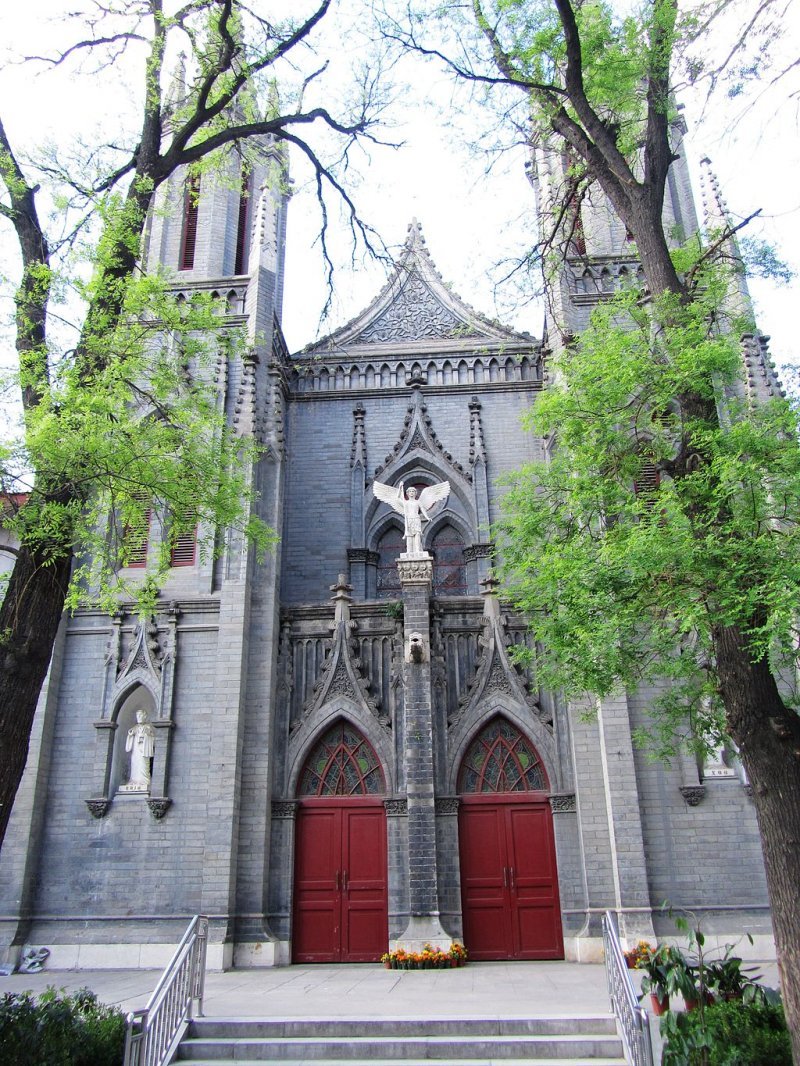
Turn right past the church on Taijichang Dajie (formerly Rue Marco Polo) and head north in the direction of Chang’an Avenue. About 370 meters north, on the west side of Taijichang Dajie, is the intersection with Taijichang Toutiao. Just inside this quiet side street, on the northern side of the road, is a sign embedded in the brick wall with the old name of this road: Rue Hart. The street was named for the legendary inspector general of the Qing Maritime Customs Service, Sir Robert Hart (1835-1911).
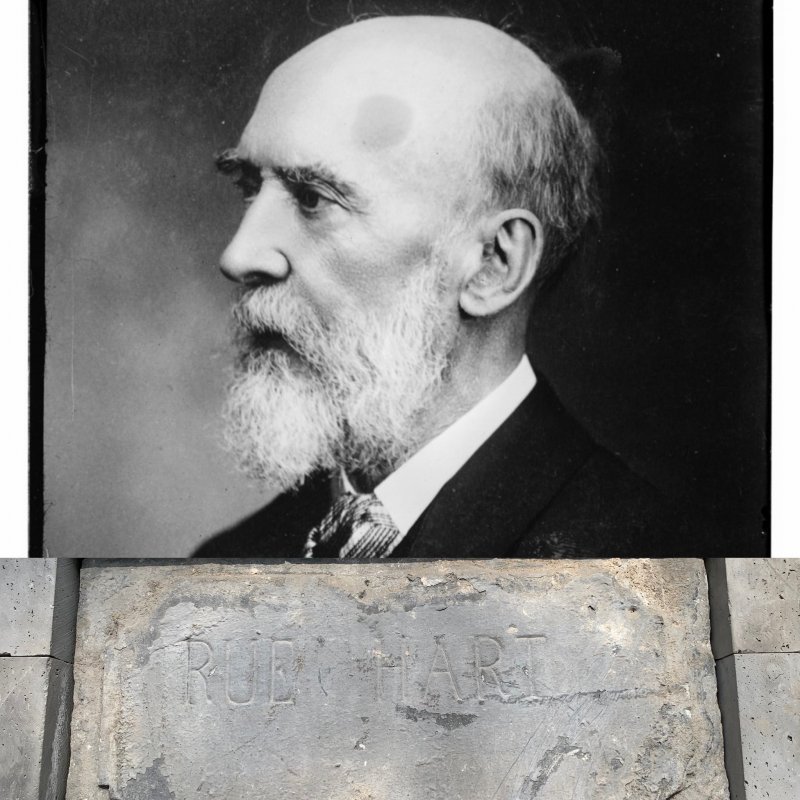
Continue north and cross under Chang’an Avenue, and you will be at the southern end of Wangfujing. In the Republican era, international residents of the city referred to Wangfujing as “Morrison Street,” after the famous Australian journalist George Ernest Morrison (1862-1920), who lived surrounded by his impressive collection of books and other Chinese texts in a lavishly restored courtyard off of the main drag. Today, there’s a Cheesecake Factory. They sell cheesecake.
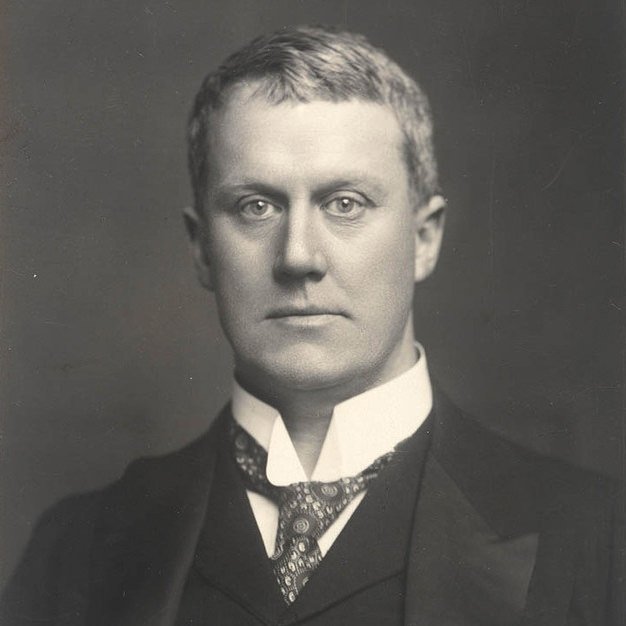
Walking north along the Wangfujing pedestrian street, you will come to the newly opened Jinyu Hutong subway station. Take a moment and compare the photograph below, taken at the end of the Qing era, with the contemporary look of the street.

Finally, just north of Jinyu Hutong station is St. Joseph’s Church. A chapel was established on this spot by the Italian Jesuit Lodovico Buglio (1606-1682) in 1653. Buglio’s church was destroyed in an earthquake in 1720 but was rebuilt in the 1860s. The new, significantly larger church was burned down in 1900 during the Boxer Rebellion (Sensing a theme here?). The current structure was built in 1904 and renovated in 2000.

Just past the church, heading north, is the western end of Baishu Hutong. Heading east along Baishu Hutong will take you back to Dengshikou (where a branch of the Slowboat Taproom also awaits if your peregrinations and ambulations have left you hungry and thirsty).
About the Author
Jeremiah Jenne earned his Ph.D. in Chinese history from the University of California, Davis, and taught Late Imperial and Modern China for over 15 years. He has lived in Beijing for nearly two decades and is the proprietor of Beijing by Foot, organizing history education programs and walking tours of the city including deeper dives into the route and sites described here.
READ: Weekend Walk: Take a Stroll Through History Around Beijing's Lakes District
Images: Jeremiah Jenne, Historical Photographs of China, University of Birmingham, Internet Archive, Wikicommons


